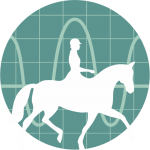ISES 10 First Training Principles
Human and horse welfare depend upon training methods and management that demonstrate:

This is what ISES says about the scientific approach to the art of sustainable Equitation: ‘Equitation Science promotes an objective, evidence-based understanding of the welfare of horses during training and competition by applying valid, quantitative scientific methods that can identify what training techniques are ineffective or may result in equine suffering. Equitation Science uses a multidisciplinary approach to explain horse training, for example from a learning theory perspective that removes anthropomorphism and emotiveness’. Learn more about ISES on www.equitationscience.com.
Note from the WOW team | These first principles are NOT a method but together they describe practical guidelines based on scientific knowledge which underpins all ethological needs and learning by all animals.
1. Regard for human and horse safety
By acknowledging the horse’s size, power and flightiness | By learning to recognise flight/fight/freeze behaviours early. By minimising the risk of causing pain, distress or injury | By ensuring horses and humans are appropriately matched.
2. Regard for the nature of horses
By meeting horse welfare needs such as foraging, freedom and equine company | By respecting the social nature of horses. By acknowledging that horses may perceive human movements as threatening | By avoiding dominance roles during interactions.
3. Regard for horses’ mental and sensory abilities
By acknowledging that horses think, see and hear differently from humans | By keeping the length of training sessions to a minimum. By not overestimating the horse’s mental abilities | By not underestimating the horse’s mental abilities.
4. Regard for emotional states
By understanding that horses are sentient beings capable of suffering | By encouraging positive emotional states | By acknowledging that consistency makes horses optimistic for further training outcomes | By avoiding pain, discomfort and/or triggering fear.
5. Correct use of desensitisation methods
By learning to apply correctly systematic desensitisation, over-shadowing, counter-conditioning and differential reinforcement.
By avoiding flooding (forcing the horse to endure aversive stimuli).
6. Correct use of operant conditioning
By understanding that horses will repeat of avoid behaviours according to their consequences
By removing pressures at the onset of a desired responses.
By minimising delays in reinforcement
By using combined reinforcement
By avoiding punishment.
7. Correct use of classical conditioning
By acknowledging that horses readily form associations between stimuli.
By always using a light signal before a pressure-release sequence.
8. Correct use of shaping
By breaking down training into the smallest achievable steps and progressively reinforcing each step toward the desired behaviour.
By changing the context (trainer, place, signal), one aspect at a time
By planning the training to make it obvious and easy.
9. Correct use of signals or cues
By ensuring the horse can discriminate one signal from another | By ensuring each signal only has one meaning By timing the signals with limb biomechanics | By avoiding the use of more than one signal at the same time.
10. Regard for self-carriage
By training the horse to maintain gait, tempo, stride length, direction, head, neck and body posture. By avoiding forcing a posture or maintaining it through relentless signalling (nagging).
